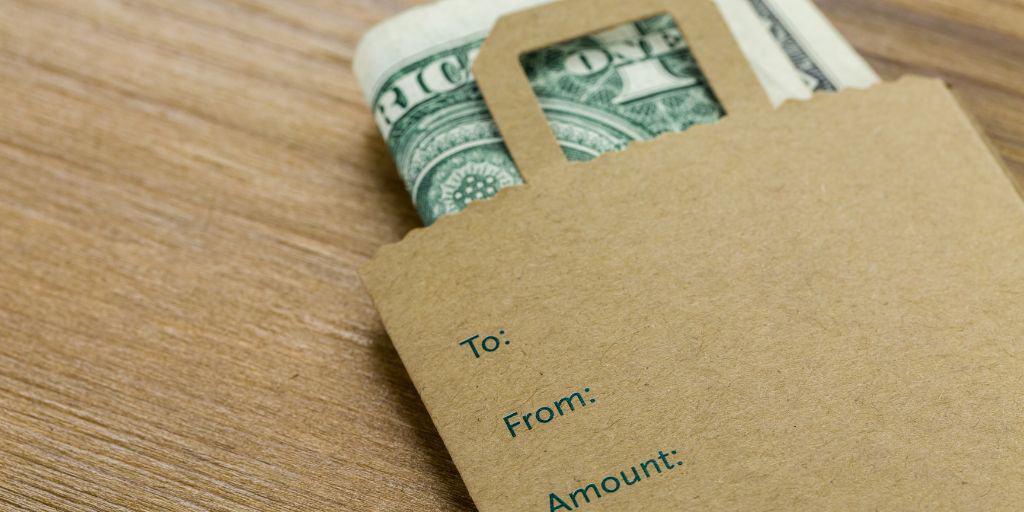
First time having $10,000 in the bank?
It’s a great feeling, and a freeing one. A cash cushion frees you to start thinking about the bigger picture. For many, it marks the first time they start seeing their financial future as one of possibility rather than just an endless slog of trying to get out from under crippling debt.
But all those endless possibilities can start to look daunting, as they spill out toward the horizon. Stay grounded by focusing on these priorities first.
1. Plan Your Emergency Fund
Everybody needs an emergency fund. How much varies from person to person, depending on factors like the stability of your income and expenses, and your job security.
For most people, an emergency fund that can cover two to 12 months’ living expenses is appropriate. Workers with extremely stable jobs and monthly expenses can get away with just a few months’ expenses, while self-employed people or those with variable expenses typically need more.
If two to 12 months’ worth of living expenses sounds like a lot, don’t fret. You don’t need to save all of it at once or even need all of it in cash savings.
As a priority, just set aside $1,000 in your savings account. Consider holding it in a different bank as your checking account if you get tempted to raid your savings every time you log in and see the balance sitting there like a cupcake waiting to be devoured.

“That cupcake's not gonna eat itself!”
After that first $1,000, simply set aside a portion of your savings to go toward filling up your emergency fund. For example, if you maintain a 20% savings rate, you could have your employer split your direct deposit so all 20% goes into your savings account, then you could transfer some of it out of savings each month and into investments or pay down debts.
2. Pay Off High-Interest Debts
It’s hard to get excited about saving money at 1% interest or even investing at 10% returns if you have a credit card balance costing you 24% interest.
Pick your smallest debt and prioritize it over everything else. Once you knock that out, put all your savings toward knocking out the next smallest debt. It’s called the debt snowball method because, with every debt you knock out, you have more money each month to pay off the next one.
Psychologically, it also helps to score some early wins by picking off smaller debts first.
Check out our interview with Adam Carroll for more tips on knocking off debts quickly.
3. Maximize Employer Matching Contributions
If you aren’t taking full advantage of employer matching contributions, you’re leaving part of your paycheck on the table.
You earn an instant return on every dollar you invest with an employer match. For example, if your employer matches your 401(k) contributions up to 5% of each paycheck, you earn a 100% return on every dollar you contribute up to that ceiling.
Don’t leave that money on the table. Contribute up to the limit of what your employer matches.
4. Open an IRA
If you don’t have an individual retirement account (IRA), open one now. As in, open a new tab in your browser right now and spend 90 seconds opening one with your brokerage of choice (I use Charles Schwab).
In 2023, Americans under 50 can contribute up to $6,500 to their IRA. Americans 50 and over can contribute an extra $1,000 on top of that as a “catch-up contribution.”
I personally prefer Roth IRAs, since they compound and grow tax-free, and you pay no taxes in retirement on withdrawals. They’re more flexible for early withdrawals if you decide to retire early or use the funds for other uses like buying a first home. But if you’d rather take the tax deduction now instead, more power to you.
Real estate investors can invest tax-free with a self-directed IRA if they like, but it comes with more fees and headaches than investing in a regular brokerage IRA.
The more of your paycheck you can keep for yourself and out of Uncle Sam’s (greedy) hands, the faster you can build wealth and reach your financial goals.
5. Explore Other Tax-Advantaged Accounts
While your retirement account should remain your highest investing priority, you also have options for tax-sheltered education accounts and healthcare accounts.
To save for your children’s or other family members’ college education, you can open a 529 plan or an education savings account (ESA). While 529 plans are managed at the state level—and each state structures them a bit differently—ESAs follow federal rules. It works like a Roth IRA for college costs.
Remember, though, your children have dozens of ways to pay for college. You only have one way to ensure you don’t run out of money in retirement: investing enough money. When in doubt, invest for retirement.
You can also open a health savings account (HSA) to save and invest tax-free for healthcare costs. In fact, HSAs offer the best tax breaks of any tax-sheltered account. You get to deduct all money you contribute, which compounds tax-free, and withdrawals are tax-free as long as you put them toward qualified healthcare expenses.
Keep in mind that HSAs work best for generally healthy people, as they’re paired with a high-deductible healthcare plan. They make a good option for healthy self-employed people or workers without a comprehensive health insurance policy through their job.
6. Stock Investing: Start with Index Funds
Not sure how to invest in these retirement and other investment accounts?
Keep it simple, and just invest in index funds that mirror that larger market. For example, for exposure to 500 of the largest companies in the U.S., you can invest in an index fund that mimics the S&P 500. To invest in U.S. small-cap companies, you can invest in a fund that mirrors the Russell 2000 index.
Or keep it even easier and invest in an all-stock-market fund like Vanguard’s VTI for broad exposure to thousands of U.S. stocks. Add exposure to foreign stocks with the international fund counterpart, VXUS. You could literally invest in those two funds and never learn another thing about stock investing.
But if you do want more guidance, consider starting with a robo-advisor.
7. Invest with a Robo-Advisor
With a robo-advisor, you complete a brief questionnaire with relevant details like age, goals, and risk tolerance. It then proposes an investment portfolio that fits your needs, and if you like the look of it, you can approve it and let the robo-advisor manage your investments for you.
They periodically rebalance your portfolio to ensure it maintains your target asset allocation, so you don’t have to worry about that. They can pull tricks like tax-loss harvesting to lower your tax bill in more advanced cases.

“Jarvis, lower my taxes.”
Remember how I said I use Charles Schwab as my brokerage? They offer a free robo-advisor, which I take advantage of. The only requirement is a $5,000 starting balance.
One other advantage to index funds and robo-advisors is the low expense ratios. Because these are passively managed funds, they’re incredibly cheap, so less of your money gets funneled off by the fund to pad its own pockets.
You don’t need to become an expert stock investor. Seriously.
8. Experiment with Real Estate Crowdfunding
Traditional real estate investing takes a lot of time, money, and skill. Even if you use tricks to flip houses with no money down, it adds to your risk.
With $10,000 in the bank, you probably don’t have enough to go out and buy a rental property or flip a house. But you have plenty for investing in real estate crowdfunding platforms.
In fact, many crowdfunding platforms let you start with just $10 to $100. That means you can dip your toe in the water and see how you like it before committing more money.
For example, Groundfloor and Fundrise both let you invest with just $10. Concreit lets you invest with $1. You can buy fractional shares in rental properties for $20 on Ark7 or $100 on Arrived.
Once upon a time, people had to buy shares in publicly traded REITs as the only low-cost option to add real estate to their portfolios. However, public REITs share too much correlation with stock markets to offer many diversification benefits, so I prefer real estate crowdfunding as a lower-correlation alternative.
9. Think Bigger: Plan Your FIRE Escape
When you’re in debt, you tend to think defensively. All you think about is how to get out of that debt—it’s harder to think about the bigger picture of building wealth and passive income or retirement planning.
But you can ask bigger questions as you put high-interest debts behind you and grow your bank account balance. For example, when do you want to retire? You’d be surprised to learn that with a high enough savings rate, you can retire on any timeline you want. I once calculated that it would take around five years to retire if you saved and invested 90% of your income at a 10% annual return.
Most of us don’t want to live on just 10% of our paychecks, but the point remains. You’re in the driver’s seat; you control how quickly you build wealth and how quickly you build passive income to replace your paycheck.
Because when your investments generate enough passive income to cover your living expenses, your job becomes optional. It’s called financial independence (FI), sometimes expanded to financial independence/retire early (FIRE).
As you become a more sophisticated investor, you can explore advanced planning tools like Roth conversion ladders to access your IRA funds early or invest in real estate with a self-directed IRA. Instead of the typical 7% to 10% returns earned by stocks in an average year, you can learn how to invest in real estate syndications for 15% to 30% returns. And when you become an accredited investor, a whole new world of private equity investments open up to you.
But don’t worry about any of that now. Start by simply deciding when you want to reach financial independence and working backwards from there to determine how much of each paycheck you need to save and invest.
Final Thoughts
It’s all too easy to get overwhelmed by investing and personal finance questions.
Start by setting aside $1,000 in your emergency fund and maximizing employer contributions. Then focus on paying off high-interest loans, if you have any. After that, consider funding your IRA, perhaps letting a robo-advisor handle the investments for you.
Don’t stress about it. If it starts feeling like a to-do list, think of the list above as just ideas and tips for getting started.
And when in doubt, ask for help. No one is born knowing how to manage money or investments—you learn by asking other people who know more than you do.





